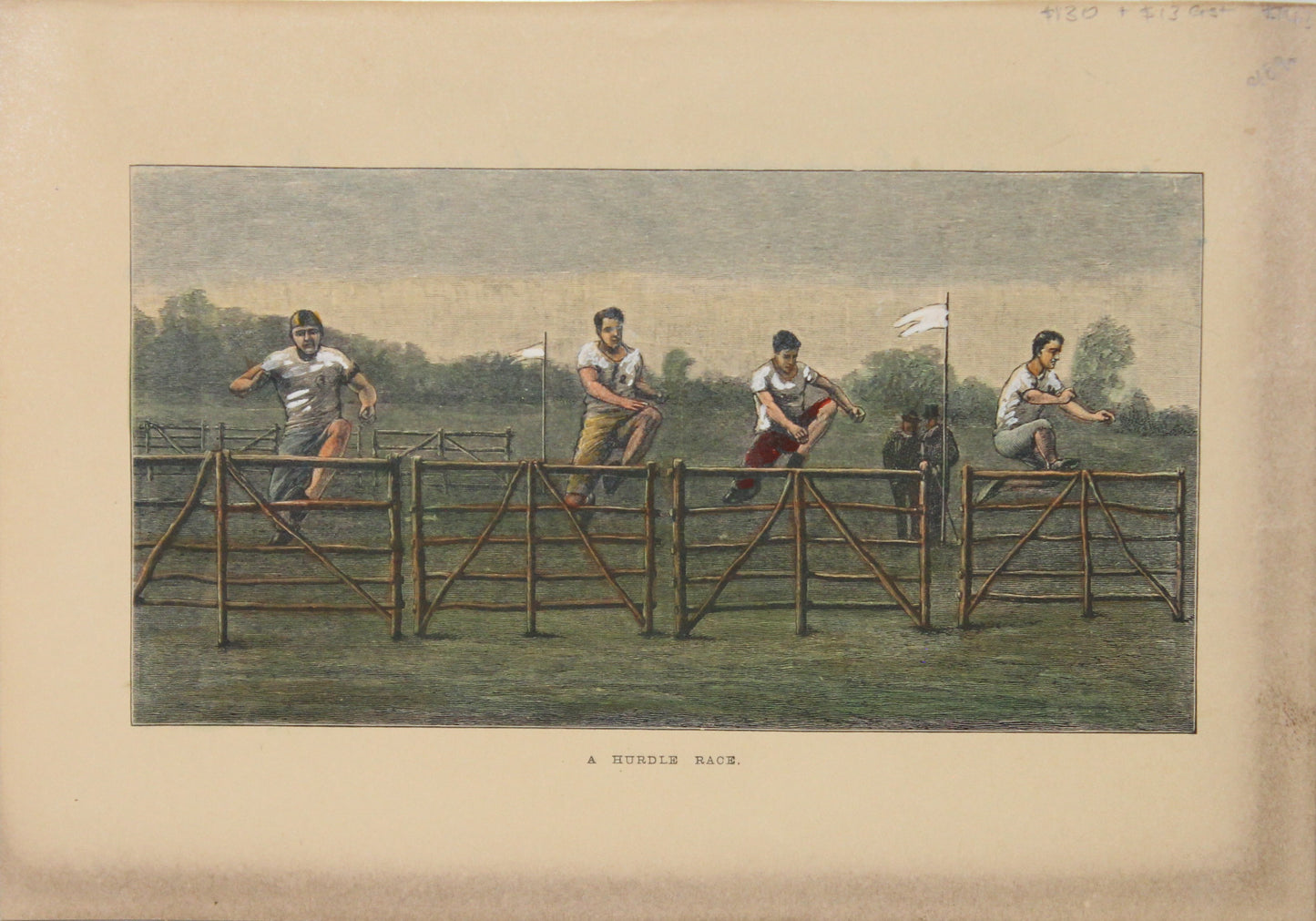Antiquarian Print Shop
Sporting, Athletics, The Hurdle Race, c1890
Sporting, Athletics, The Hurdle Race, c1890
Couldn't load pickup availability
Date: c1890
Paper Size: 188 x 130mm
Print Size: 112 x 97mm
Condition: Good
Technique: Copperplate engraving with later hand colouring
Price: $100
Description: Copperplate engraving with later hand colouring
Provenance
Athletics provides us with more recorded history than any other sport ranging from the ancient Egyptians to the earliest Greek Olympic games.
There are various fleeting references to running, leaping, and throwing throughout the centuries. These athletic activities were practiced by the common people on Sundays, feast days, and at fairs.
The English loved to bet and the 18th Century saw the emergence of large-scale betting amongst the nobility and gentry. sport attracted them and their money including wagers on horse races, cricket, boxing, and foot races. A common footrace would be between your footman and my footman. as part of their job, a footman had to run ahead to prepare the path for a coach when the gentry was traveling
Wagers were taken on someone traveling on foot, to a particular distance in a certain period of time. This was the beginning of Pedestrianism.
Cross Country Races, Initially known as "hare and hounds" or "paper chases" dated back to at least 1819. English schools entered into competitions and championships. In cross country races, athletes may hurdle over natural obstacles such as logs, mounds of earth and small streams. This represents the sporting origin of the modern events.
Hurdling is the act of jumping over obstacles at a very high speed. Hurdling in the early 19th Century, began when hurdlers ran at and jumped over each hurdle landing on both feet. This was a highly specialised form of obstacle racing that is part of the sport of athletics. passing under or knocking over the hurdles resulted in disqualification.
To learn more about The History of English Sport click here
Share


